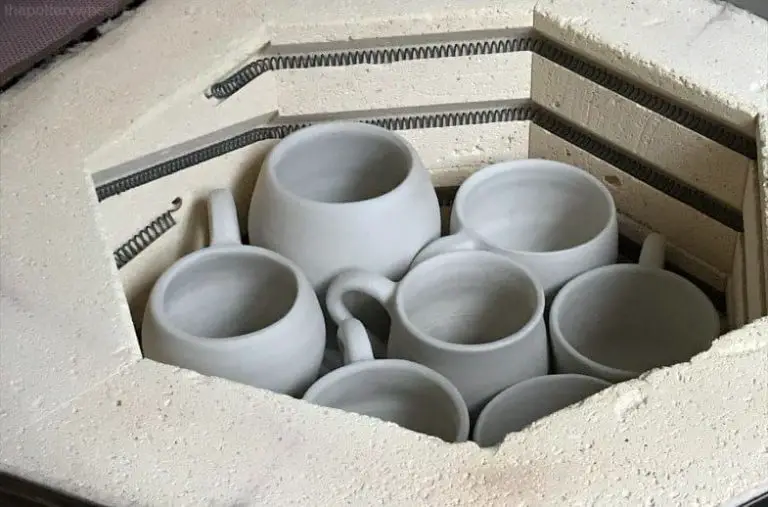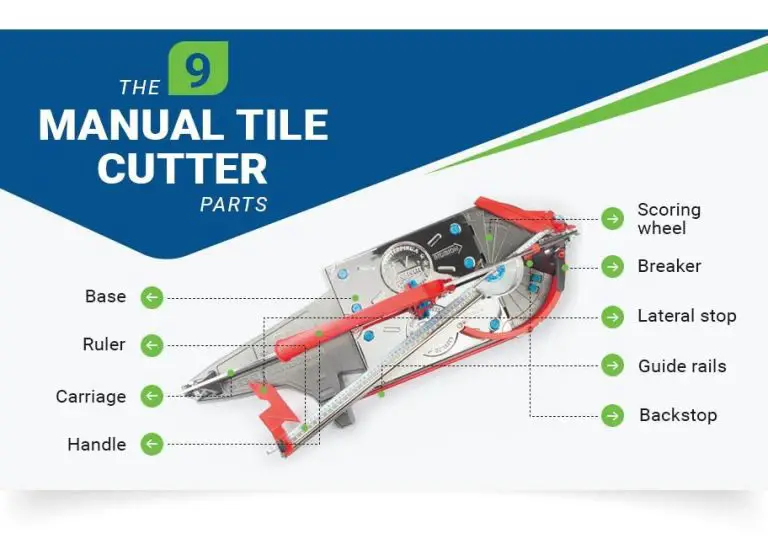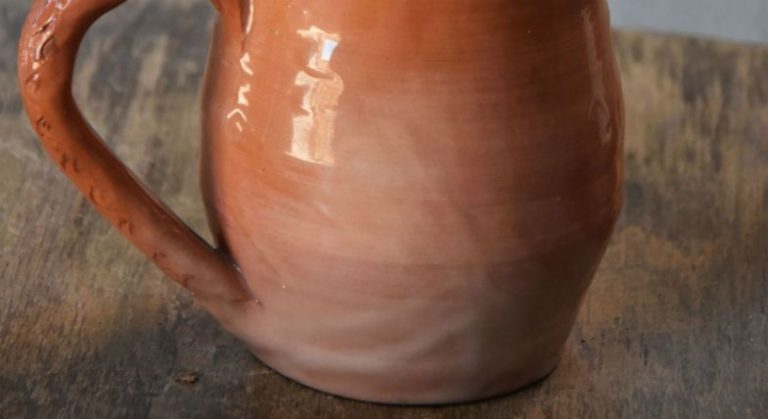Is 100% Ceramic Microwave Safe?
Microwaving ceramic dishware is a common practice in many households. However, conflicting information exists on whether or not ceramic is truly 100% microwave safe. Some sources claim ceramics pose no risks, while others warn of potential dangers like thermal shock, lead leaching, and radiation exposure. With so much uncertainty surrounding ceramic cookware in microwaves, it’s important to analyze the facts and science behind the claims. This article will provide a definitive answer on the microwave safety of ceramic dishware, exploring key considerations like material composition, manufacturing standards, and proper usage guidelines. Clear advice will be presented to help consumers make informed choices when microwaving ceramics.
Definition of Ceramic
Ceramic refers to any of the various hard, brittle, heat-resistant, and corrosion-resistant materials made by shaping and then firing an inorganic, nonmetallic mineral at high temperatures. The word “ceramic” comes from the Greek word keramos, meaning potter’s clay or pottery. Ceramics are formed by the application of heat and subsequent cooling. The most common ceramic materials are earthenware, stoneware, and porcelain.
The creation of ceramics generally involves taking clay and mineral powders, shaping them into desired forms, and then hardening the objects with high heat. The clay is molded into its desired shape, dried, and then fired in a high-temperature kiln or furnace to harden the clay through a process known as sintering. The firing process chemically transforms and physically fuses the material, creating a dense, strong, hardened ceramic object.
Ceramics are compounds between metallic and nonmetallic elements for which the interatomic bonds are either totally ionic or predominantly ionic. They are nonmetals, or metalloids, such as silicon, boron, carbon, aluminum, and titanium.
Sources:
https://en.wikipedia.org/wiki/Ceramic
https://www.merriam-webster.com/dictionary/ceramic
Types of Ceramic Dishware
Ceramic dishware encompasses a range of different materials including porcelain, stoneware, and earthenware. These types of ceramic dinnerware have some similarities but also key differences in how they are produced and what they are best suited for.
Porcelain is considered the finest type of ceramic dinnerware. According to https://www.lenox.com/blogs/buying-guide/4-types-of-ceramic-dinnerware, porcelain is made from kaolin clay and fired at very high temperatures of over 2,500°F. This results in dinnerware that is smooth, non-porous, and highly durable. Porcelain is commonly used for more delicate dinnerware pieces like teacups and saucers.
Stoneware is another popular choice for ceramic dinnerware. As explained by https://www.thespruceeats.com/dinnerware-materials-908883, stoneware utilizes coarser clay and is fired around 2,200°F. It results in a heavier, more opaque ceramic that stands up well to daily use. Stoneware is a common choice for casual dinnerware sets and oven-safe items.
Earthenware is a more porous type of ceramic made from clay fired at lower temperatures, usually below 2,000°F. It is softer and more delicate than stoneware or porcelain. Earthenware is best suited for decorative pieces rather than heavy culinary use. It requires more careful handling to prevent chipping or cracking.
Microwave Safety Concerns
When using any microwave, there are some safety concerns to be aware of. These mainly relate to the heating mechanics, hotspots, and arcing that can occur.
Microwaves work by emitting electromagnetic waves that cause water molecules in food to vibrate rapidly, producing friction that heats the food. This differs from conventional ovens that rely on heated air. However, microwaves do not make the cookware itself hot unless materials in the cookware absorb microwaves.
One issue that can arise is uneven heating or hotspots in food. Since the microwaves penetrate and heat food unevenly, some areas may become extremely hot while others remain cool. Stirring or rotating food midway can help prevent this.
Arcing is another potential hazard. This refers to electric sparks that can damage the interior or even lead to fires. Arcing occurs when microwaves come into contact with metal, such as fork tines, aluminum foil, or metal trim on ceramics. Never put any metal in the microwave.
To minimize risks, carefully follow all manufacturer instructions for microwave-safe cookware. Do not use any containers, lids, or wraps not deemed microwave-safe. Always supervise cooking, stir periodically, and allow food to cool before handling.
Testing Ceramic Microwave Safety
There are a few ways to test if ceramic dishware is safe for microwave use. The two main methods involve analyzing the material composition and heat testing.
Material analysis involves inspecting the ceramic item for markings or labels indicating microwave safety. Ceramic that is specifically designed to be microwave safe will often have a label stating “Microwave Safe” or may display the international microwave safe symbol, which looks like three lines/waves. 1 This symbol indicates that the ceramic has been tested and meets requirements for thermal stability in the microwave. Additionally, entirely glazed or vitrified ceramics are generally considered microwave safe.

If there are no indicators of microwave safety, the next step is to do a heat test. Place the empty ceramic dish in the microwave next to a glass of water and microwave for 1 minute at full power. Using oven mitts, carefully remove both items. If the ceramic dish remains cool while the water boils, it likely does not absorb microwave energy and is safe for microwave use. However, if the ceramic feels warm or hot, it is not microwave safe. 2
FDA Regulations
The FDA has regulations regarding acceptable levels of lead and cadmium in ceramicware used for food. According to the FDA guidance document “Safety of Imported Traditional Pottery Intended for Use with Food”, ceramicware should not leach more than 3 parts per million (ppm) of lead into food or liquids, and no more than 0.25 parts per million (ppm) of cadmium.1 This includes plates, cups, mugs, and other dinnerware items that come into contact with food.
The FDA also has regulations on labeling ceramicware that contains lead. Any ceramic article containing more than trace amounts of lead should have a permanent label or sticker stating that it contains lead and is not for food use. 2
These regulations aim to limit potential lead and cadmium exposure from ceramicware used with food.
Manufacturer Instructions
Microwave oven manufacturers provide specific instructions on the safe use of ceramic dishware in their appliances. It is critical to closely follow the recommendations in the owner’s manual for your specific model. Manufacturers such as Whirlpool and GE Appliances have manuals available online that cover proper use of ceramics [1]. Key instructions include:
– Check the owner’s manual to determine if the ceramic is oven-safe. Some ceramic contains materials that may not be recommended for microwave use.
– Follow any instruction about pre-heating empty ceramic dishware before use. Some ceramics require gradual heating to prevent cracking.
– Do not microwave ceramics with metal trim or other metal components which can cause arcing.
– Use recommended power levels and cooking times specific to ceramic use. Improper microwave settings can lead to cracks or breaks.
– Allow ceramic dishware to cool gradually after cooking to prevent thermal shocks from sudden temperature changes.
Adhering closely to the manufacturer guidance is the best way to safely use ceramic in your specific microwave model. Check your manual or contact the maker if unsure.
General Safety Guidelines
There are a few key safety guidelines to follow when using a microwave oven:
- Do not operate the microwave when it is empty, as this can damage the magnetron (according to the FDA [1]).
- Always make sure to remove any metal objects from food before microwaving, as metal can spark and cause fires in the microwave.
- Check food temperatures carefully and stir periodically to prevent uneven heating that could lead to burns.
- Do not microwave sealed containers or plastic containers not intended for microwaving, as pressure can build up and cause containers to break or explode.
- Keep the inside of the microwave clean to prevent food particles or spills from catching fire ([2]).
- Supervise children closely when using the microwave.
- Do not use aluminum foil or metal in the microwave, which can cause electrical arcing.
Pay attention to warning signs like sparking, smoke, or unusual smells, and discontinue microwaving immediately if these occur. Follow all manufacturer instructions for safe operation and placement away from combustible materials ([3]). With some basic precautions, microwave ovens can be used safely to heat foods conveniently.
Pros and Cons of Ceramic Dinnerware
Ceramic dinnerware offers a range of advantages, but also has some potential drawbacks to consider. On the pro side, ceramic dishes are durable and long-lasting. According to Toby Leon, ceramic can withstand hundreds of cycles through the dishwasher without significant wear and tear. Ceramic also retains heat well, keeping food warmer longer. Many people find ceramic more aesthetically appealing than plastic or other materials. Ceramic comes in a wide array of colors, prints, and designs. From an environmental standpoint, ceramic is generally considered safe and eco-friendly. It does not contain chemicals like BPA found in some plastics.
In terms of cons, ceramic dinnerware is relatively heavy and can chip, crack, or break if dropped. Repairs can be difficult or impossible. Ceramic dishes are also sensitive to sudden temperature changes and can crack if exposed to rapid heating or cooling. They require gentler handling and care than plastic or melamine dinnerware. According to this source, ceramic is typically more expensive than other dinnerware materials as well.
Overall, ceramic strikes a balance between aesthetics, durability, and functionality for everyday use. Handled with proper care, it can last for years. However, the potential for breakage means it may not be the best choice for settings with young children. The weight and fragility should be factored into any decision to use ceramic dinnerware.
Conclusion
In summary, 100% ceramic dishware is generally considered microwave-safe, but there are some caveats. Pure ceramic with no metal added is microwave-safe, but ceramic with metal decorations or components can cause arcing and sparks in the microwave. It’s important to check the manufacturer’s instructions, look for microwave-safe labeling, and do the microwave test if you are unsure. Ceramic with cracks or damage is not microwave-safe. High-quality restaurant-grade ceramic is likely safer than cheap ceramic. The FDA doesn’t regulate ceramic for microwave safety, so manufacturers’ guidelines are key.
The main recommendations when using ceramic in the microwave are: inspect ceramic for damage before microwaving, follow all manufacturer instructions, don’t put ceramic with metal trim or decor in the microwave, watch ceramic closely the first few times you microwave it, and stop microwaving if you see any sparks or arcing. With proper precautions, high-quality 100% ceramic can be microwaved safely in most cases. Use your best judgment and discontinue use if you have any doubts about the safety of a particular ceramic item. When in doubt, transfer food to a known microwave-safe container instead.



